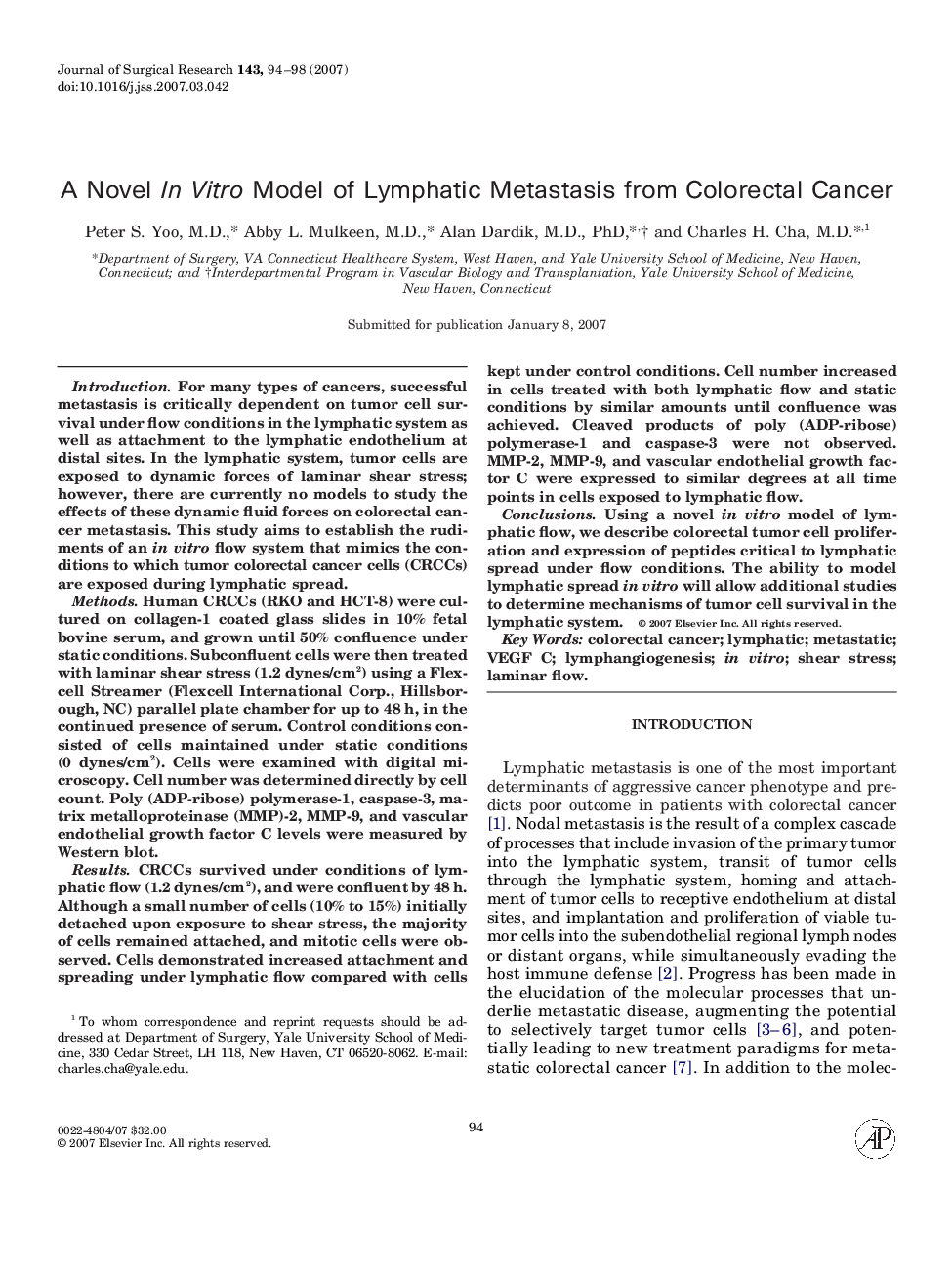| کد مقاله | کد نشریه | سال انتشار | مقاله انگلیسی | نسخه تمام متن |
|---|---|---|---|---|
| 4304140 | 1288497 | 2007 | 5 صفحه PDF | دانلود رایگان |

IntroductionFor many types of cancers, successful metastasis is critically dependent on tumor cell survival under flow conditions in the lymphatic system as well as attachment to the lymphatic endothelium at distal sites. In the lymphatic system, tumor cells are exposed to dynamic forces of laminar shear stress; however, there are currently no models to study the effects of these dynamic fluid forces on colorectal cancer metastasis. This study aims to establish the rudiments of an in vitro flow system that mimics the conditions to which tumor colorectal cancer cells (CRCCs) are exposed during lymphatic spread.MethodsHuman CRCCs (RKO and HCT-8) were cultured on collagen-1 coated glass slides in 10% fetal bovine serum, and grown until 50% confluence under static conditions. Subconfluent cells were then treated with laminar shear stress (1.2 dynes/cm2) using a Flexcell Streamer (Flexcell International Corp., Hillsborough, NC) parallel plate chamber for up to 48 h, in the continued presence of serum. Control conditions consisted of cells maintained under static conditions (0 dynes/cm2). Cells were examined with digital microscopy. Cell number was determined directly by cell count. Poly (ADP-ribose) polymerase-1, caspase-3, matrix metalloproteinase (MMP)-2, MMP-9, and vascular endothelial growth factor C levels were measured by Western blot.ResultsCRCCs survived under conditions of lymphatic flow (1.2 dynes/cm2), and were confluent by 48 h. Although a small number of cells (10% to 15%) initially detached upon exposure to shear stress, the majority of cells remained attached, and mitotic cells were observed. Cells demonstrated increased attachment and spreading under lymphatic flow compared with cells kept under control conditions. Cell number increased in cells treated with both lymphatic flow and static conditions by similar amounts until confluence was achieved. Cleaved products of poly (ADP-ribose) polymerase-1 and caspase-3 were not observed. MMP-2, MMP-9, and vascular endothelial growth factor C were expressed to similar degrees at all time points in cells exposed to lymphatic flow.ConclusionsUsing a novel in vitro model of lymphatic flow, we describe colorectal tumor cell proliferation and expression of peptides critical to lymphatic spread under flow conditions. The ability to model lymphatic spread in vitro will allow additional studies to determine mechanisms of tumor cell survival in the lymphatic system.
Journal: Journal of Surgical Research - Volume 143, Issue 1, November 2007, Pages 94–98